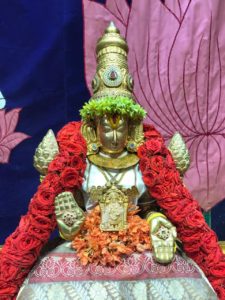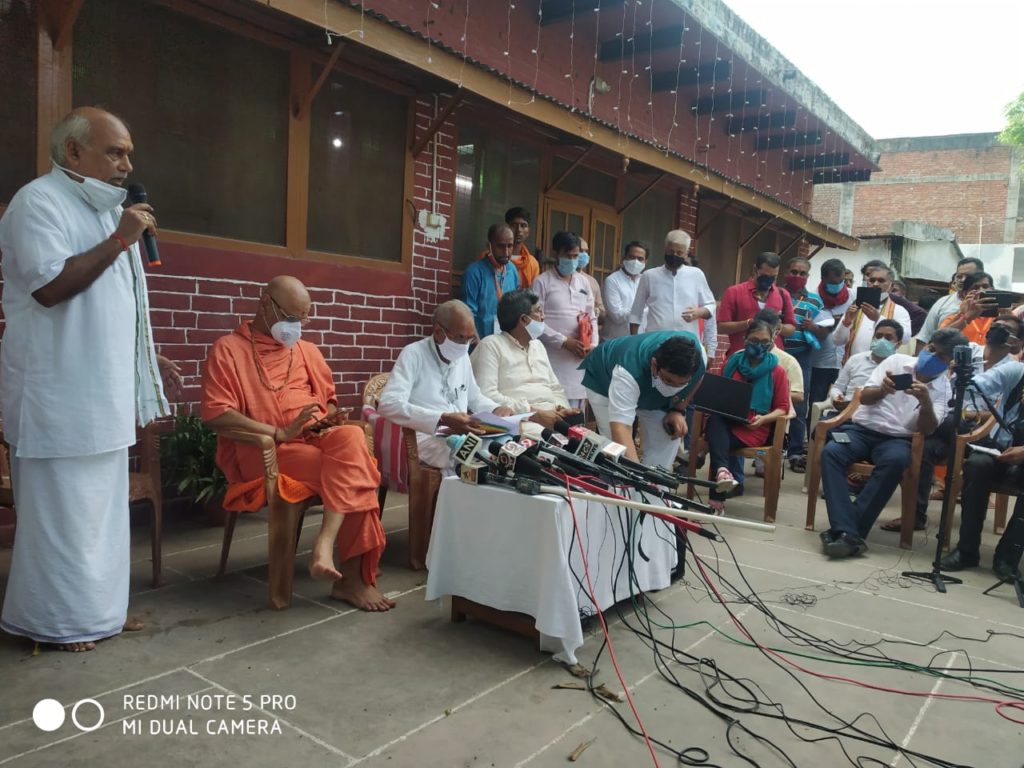
In the Magadha of yore, there lived a woman called Charumathi in a town named Kundinyapura (now in Amravati district in Maharashtra). Impressed by her devotion to the goddess, the Goddess Mahalakshmi appeared in her dream and asked her to worship Varalakshmi (Vara = boon, Lakshmi = goddess of wealth) and seek to fulfill her wishes. The prayer/worship was prescribed to be offered on the Friday of Shravana month preceding the night of the full moon. This year the holy day fell on July 31, a Friday. When Charumathi explained her dream to her family, they encouraged her to perform the pooja. Many other women of the village joined her in performing the pooja in a traditional way and offered many sweets to the Goddess Varalakshmi, along with sacred chants.
VARALAKSHMI VRATAM
Due to the rising popularity of this holy day in some states including Andhra Pradesh , it is now being declared as an optional official holiday in India. Over a period, the Bhakti of people evolves into festivals as in the case of Varalakshmi Vratam. A devout village woman in Maharashtra has inspired crores of people in Andhra Pradesh to take to Varalakshmi Vratam. That is the power of spirituality that unites Bharat over centuries.
GURUVAYURAPPAN
Varalakshmi Vratam is not the only instance. Take a look at the website of Guruvayur Sri Krishna temple. The Udayaastmana Pooja – day long worship – has been sponsored for the next fifty years. Even the late J.Jayalalithaa had to abide by this computerised queue norm. The devout Kerala has to bow to the Krishna Bhakti of the people and does all this in honour of a cowherd boy born in Mathura in UP who ruled Dwarika in Gujarat millennia ago. The power of Krishna Bhakti in Kerala does not stop with Guruvayur. It has swarmed the state government secretariat, which had to announce Sri Krishna Jayanthi (Ashada Krishna Ashtami) a public holiday impressed by the huge cascade of thousands of Krishna Jayanthi shobha yatras of Balagokulam across the state with millions of kids taking part in it year after year.
SABARIMALA AYYAPPAN
Of course, the instance of the ever- swelling ranks of devotees of Sabarimala Lord Ayyappa (a vanavasi prince of yore from the same state) is only too well known. But when the Sabarimala Ayyappa Seva Samajam (SASS) functionaries began expanding their organisation work, the pleasant surprise was that almost all states of Bharat had Ayyappa devotees in considerable number, who make it a point to go to sabarimala on pilgrimage by observing vrat. Bhakti resonates beyond political borders known as states.
SIDDHAR GORAKKAR
Siddha system of medicine, a boon endowed by holy men known as Siddhars, is unique to Tamilnadu. Tamils adore Siddhars, eighteen in number, who roamed the length and breadth of the land guiding the people in the spiritual path. Gorakkar (12th Century) is one such Siddhar. He was born in a village by the name Poigainallur in Nagapattinam district of Tamilnadu. He established the Nava Natha sampradaya of Shiva worship. It has a strong presence in Uttar Pradesh. A city named after Gorakkar is Goarkpur, the karma bhoomi of UP Chief Minister Yogi Adityanath, according to analyst Kolahala Srinivas.
When we hear that culture unites Bharat, what is meant is that it is the Bhakti aspect of Hindu culture that runs through the several pearls like the thread (sutre mani gana iva) making it a lovely garland worthy of adorning Bharat Mata. Such cultural oneness did not come about on August 15, 1947. Many millennia have gone by, with Bharat existing on the globe, ennobling mankind all through.
In short, India that is Bharat is one. She is ancient. Most important: She is Hindu.

